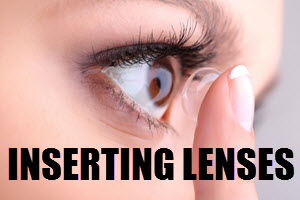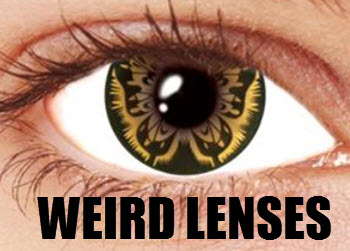The Importance of UV-Blocking in Decorative Lenses
Decorative lenses, also commonly known as cosmetic or colored contact lenses, have rapidly gained popularity among individuals eager to enhance or alter their eye color for aesthetic reasons. Although these lenses are generally perceived as fashion accessories, they pose significant health considerations, particularly in the context of UV protection. Unlike prescription corrective lenses, decorative lenses are often overlooked in terms of regulatory compliance and health education, making it crucial for users to be informed about their potential risks and the importance of safeguarding their eye health against ultraviolet radiation.
Understanding UV Radiation
To comprehend the potential dangers associated with decorative lenses, it is vital to first understand the nature of ultraviolet (UV) radiation. UV radiation is an invisible component of sunlight, divided into three categories: UVA, UVB, and UVC. The ozone layer absorbs UVC, but both UVA and UVB can reach the Earth’s surface and, subsequently, our eyes. Prolonged exposure to UV radiation can precipitate several ocular issues, including photokeratitis, which is akin to a sunburn on the cornea, and cataracts, which cause clouding of the eye’s natural lens. Furthermore, accumulated exposure over time is linked to more serious, long-term eye damage. This makes it pertinent for wearers of decorative lenses lacking intrinsic UV protection to understand these risks and mitigate potential exposure.
Why UV-Blocking Matters
The eye’s natural structures, namely the cornea and the lens, are particularly vulnerable to UV damage. The advent of UV-blocking contact lenses offers a kind of protective barrier that filters out deleterious UV rays, contributing significantly to the preservation of eye health. The American Optometric Association and various other eye health authorities underscore the necessity of selecting contact lenses that feature UV protection, particularly when they are cosmetic. This additional protective feature aids in averting the onset of UV-induced eye conditions, advocating for eye health that should not be compromised for aesthetic enhancement.
Implementing UV Protection in Decorative Lenses
To incorporate UV protection in decorative lenses, manufacturers frequently integrate absorbing agents within the lens material. These agents are designed to absorb and neutralize harmful UV rays before they can penetrate the eye. Though the protective scope of UV-blocking lenses is invaluable, it is essential to recognize that these lenses cannot cover the entire eye area. Accordingly, wearers should complement these lenses with other protective measures, such as sunglasses that offer broad-spectrum UV protection and wide-brimmed hats that provide shade, to achieve holistic coverage for the eyes and the delicate skin surrounding them.
Considerations for Choosing UV-Blocking Decorative Lenses
When opting for decorative lenses, it is imperative to balance aesthetic preferences with eye safety. Users should meticulously assess the product descriptions and specifications to ensure the chosen lenses provide UV-blocking benefits. Additionally, verifying the authenticity and safety certifications of the lenses is crucial. Only lenses that meet the relevant health and safety standards should be considered. Seeking advice from an eye care professional is a prudent step for individuals who are uncertain about the suitability of specific lenses, assuring a choice that combines visual allure with protective efficacy. An eye care professional can competently guide consumers in selecting options that fulfill desired aesthetic traits while offering essential UV protection.
In conclusion, while decorative lenses are a captivating means to enhance one’s appearance, they require careful consideration of health implications, especially in the context of UV protection. For individuals keen on learning more about UV-blocking lenses and sustaining optimal ocular health, consultations with reputable eye care organizations or practitioners are strongly recommended. Professional guidance not only enriches knowledge but also assures that style choices do not compromise eye safety. Engaging with experts serves as a safeguard, allowing for informed decisions that align with both personal style and the maintenance of eye health.



 Cosmetic contact lenses
Cosmetic contact lenses